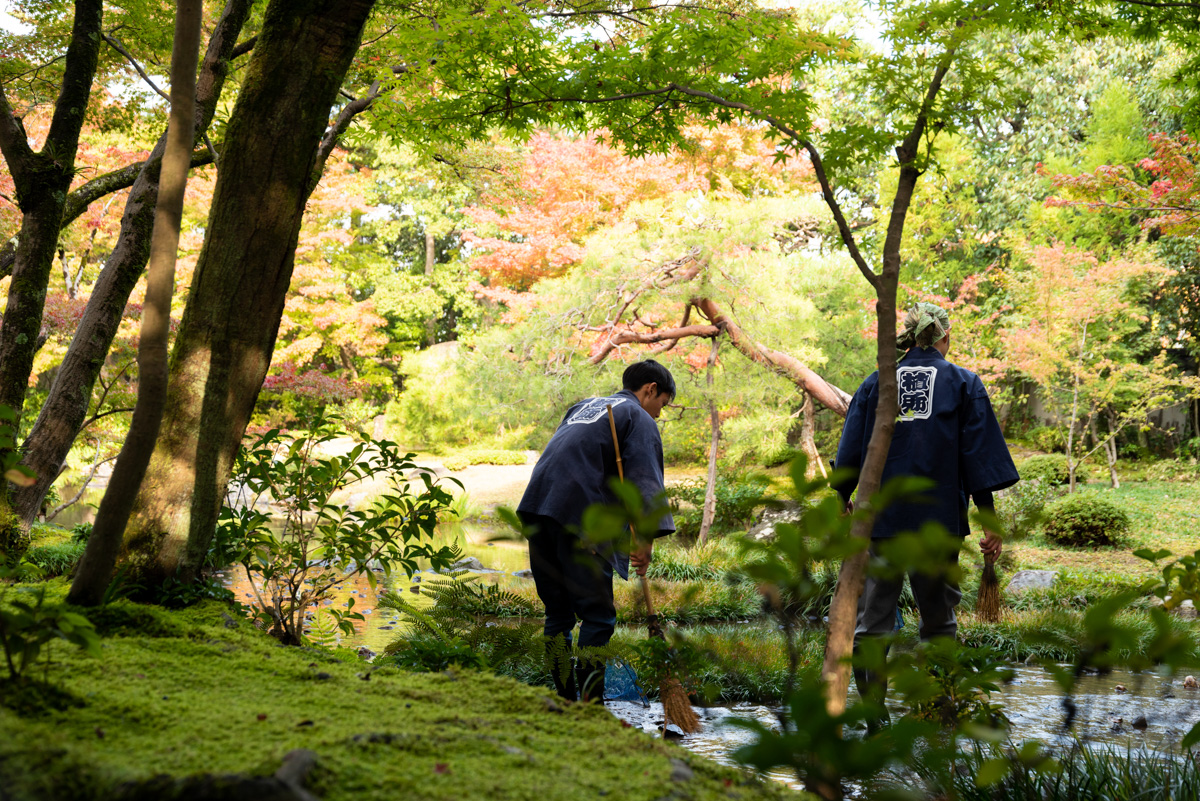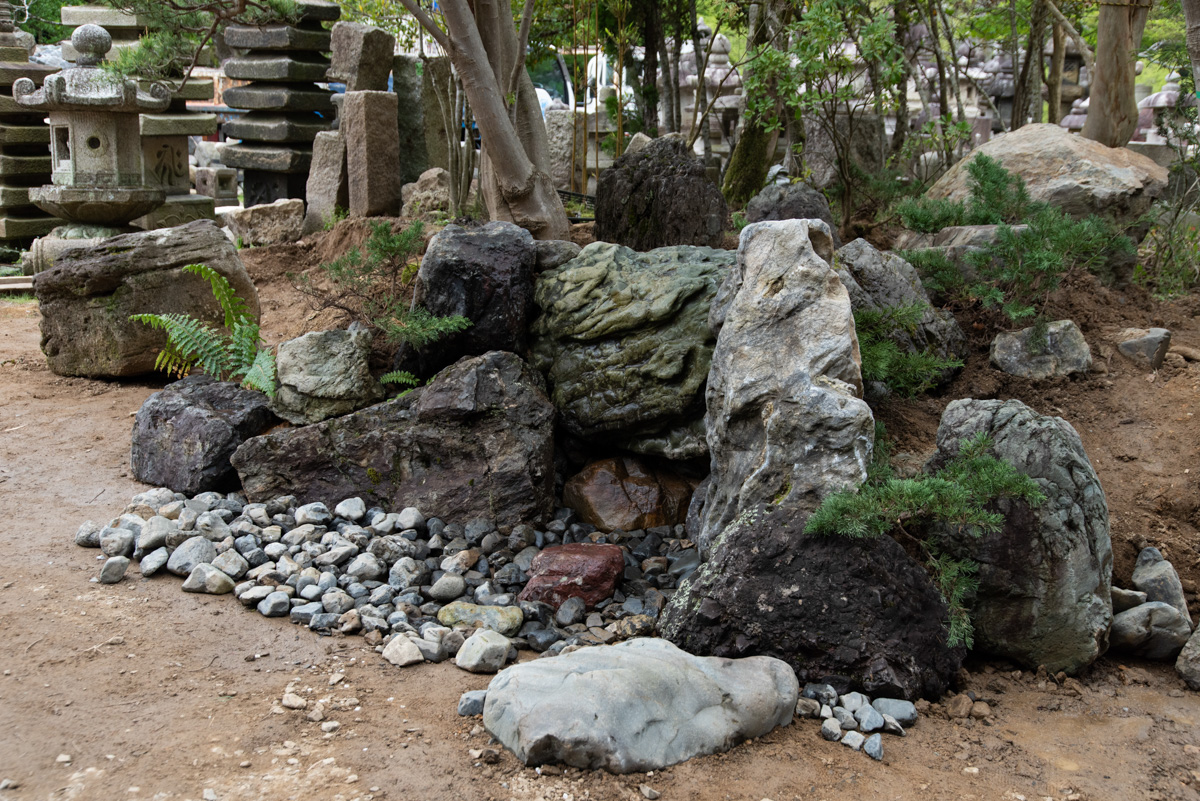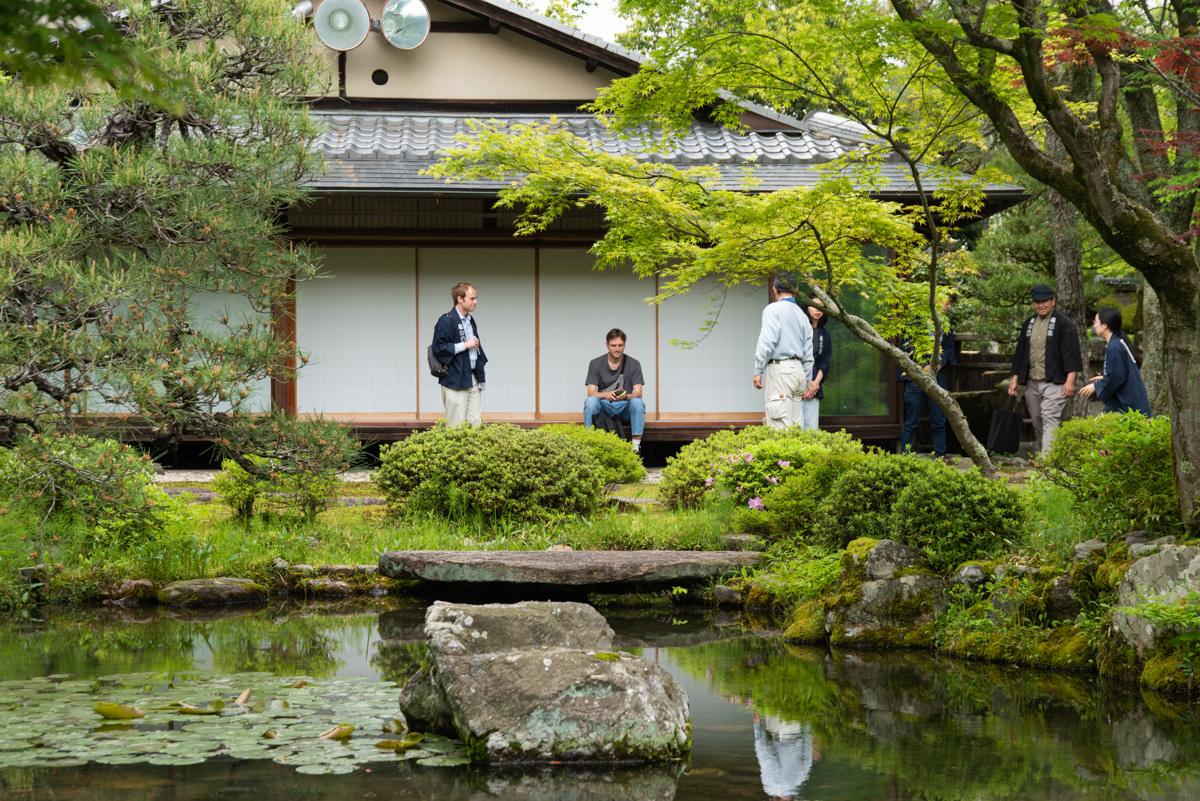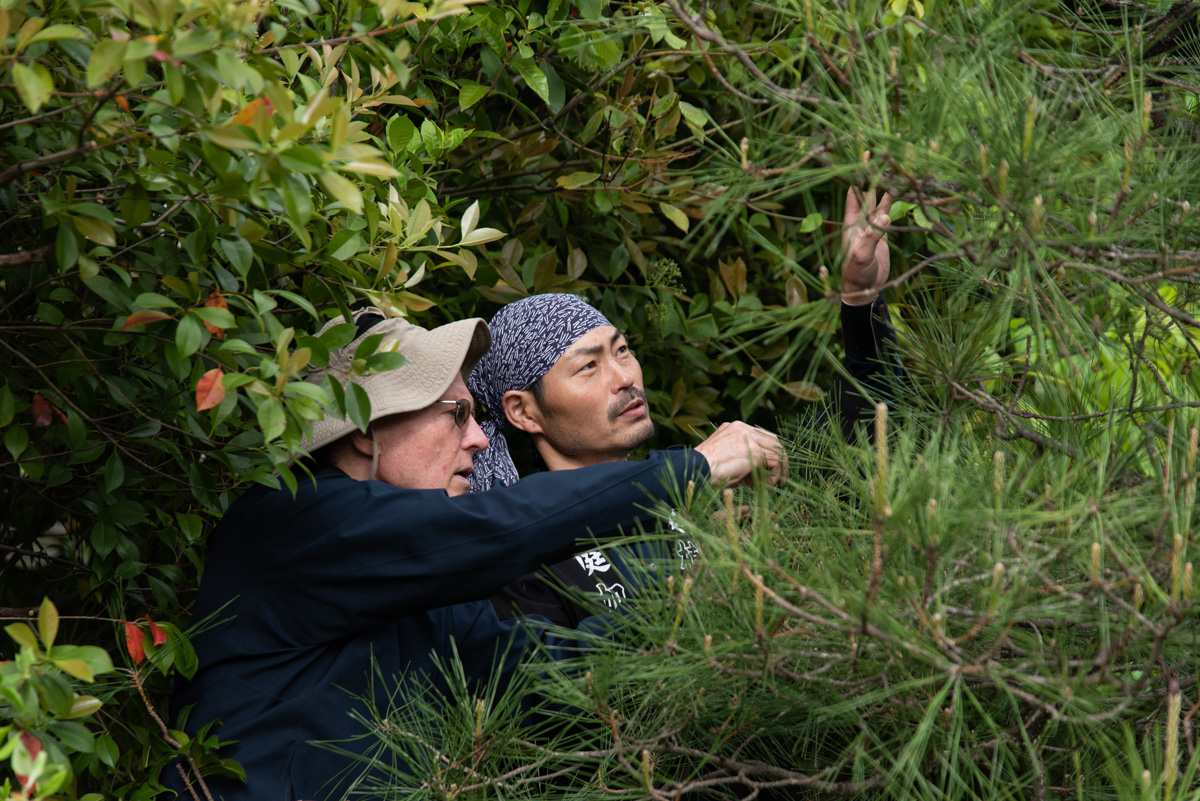Japanese Garden Training Program 2024

- Theme:
- Borrowed Scenery and Waterfalls in the Japanese Gardens of Kyoto
- Period:
- April 22-26, 2024
- Instructors:
- Tomohiko Muto, Tomoki Kato, Sueo Kato, Mitsuru Yamaguchi, Daisuke Yoshikawa, Shigeyoshi Takemura, Kenta Deguchi
About the Program:

These days, interest is rising even outside Japan in training programs in Japanese garden management and creation.
As a company that is actively invested in efforts to pass down the traditional skills of Japanese gardeners, Ueyakato Landscape considers teaching to be a valuable experience not only for those who are taught, but also for the teachers.
That’s why we created a “Japanese Garden Training Program” specifically oriented toward non-Japanese speaking participants.
In 2024, we held this program for the first year.
More beautiful, more natural, more pleasant.
Different people have different aims. In each case, however, they need skills to reach their goals. This also applies to the skills of garden management and creation.
But to learn these skills, first we need to understand why we need them. What kind of “good work” does having these skills allow us to achieve?
Fortunately, Kyoto is blessed with many famous gardens that make excellent use of the local landscape. That’s why we created a program that included not only hands-on training, but also opportunities to see some of Kyoto’s most celebrated gardens.
Program Schedule
Day 1: Lecture by Ueyakato Landscape’s company president, welcome lunch, garden excursions
Day 2 Garden management training
Day 3 Garden excursions
Day 4 Garden creation
Day 5 Garden creation
Day 1

On the program’s first day, we held an introductory lecture providing an overview of Japanese gardens and visited gardens under our company’s garden management: Dainei-ken Garden and Nanzen-ji Temple’s Hojo Garden. We introduced each garden’s characteristics and background, and explained how we manage and nurture their scenery.
Day 2

The program’s second day was dedicated to garden management training at Murin-an.
Building on what had been learnt during the first day’s garden excursions, we explained Murin-an’s features and background. Participants helped manage the garden’s ferns and prune the candles on its pine trees.
Day 3
On the third day, we visited Japanese gardens to give our participants insight into the process of Japanese garden creation. Based on this year’s course theme of borrowed scenery and waterfall arrangements, we chose Tenryu-ji Temple, Kinkaku-ji Temple and Daisen-in Temple. There were lots of questions from instructors, and our participants raised many topics about Japanese gardens. By this point, the participants were now very familiar with one another and ready to approach the challenge of Japanese garden creation.
Days 4 and 5

On Days 4 and 5, we used what we had learned so far to create Japanese garden scenery together. After instructors demonstrated how heavy machinery is used to place the first waterfall stone, participants chose stones and the positions to display them before setting them in place.
To help our participants to complete the waterfall within two days, our instructors had them choose from a pre-selected range of stones. Once they learned how to set stones and decide how to display them, they each chose the stones they considered to be ideal and decided the positions to set them in.
Looking Forward and Looking Back
During this program, participants actively thought of and discussed ideas among themselves. Not only were they able to talk about techniques for transplanting and transporting trees, how to split bamboo, and different types of stone lanterns, during our garden creation exercise, the participants themselves discussed what kind of waterfall to base their own vision for the garden on . Through trial and error, they completed this waterfall.
This was our program’s first year, but it turned out to be an extraordinarily meaningful course. In 2025, we will conduct a similar program with a different theme. To apply, please click here.
Some of our materials from past textbooks are available for purchase. Please contact us using the form below. Once we receive your contact information, we will send you an email explaining text chapters and their respective prices. We will then sell you only the data you have requested.
Thank you very much for your interest.

